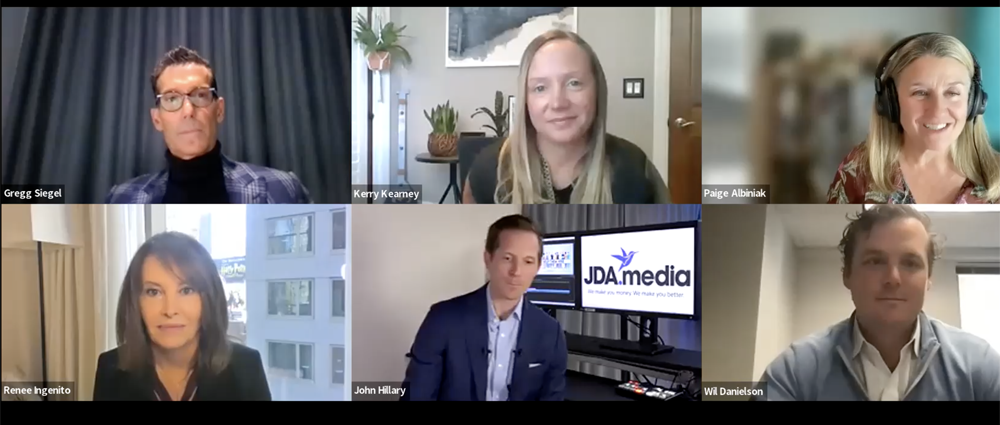
Spot TV Revenue: Flat To Down In ’23 After Banner Political Year

 TV stations are facing a flat to down 2023 when it comes to spot TV revenue after the nearly $9 billion mid-term election — with about half of that going to broadcast — that just wrapped up, panelists at TVNewsCheck’s webinar, Optimizing Spot TV in a Non-Political Year, said last Thursday.
TV stations are facing a flat to down 2023 when it comes to spot TV revenue after the nearly $9 billion mid-term election — with about half of that going to broadcast — that just wrapped up, panelists at TVNewsCheck’s webinar, Optimizing Spot TV in a Non-Political Year, said last Thursday.
With a possible recession looming and interest rates continuing to climb to try to stem inflation, categories that look promising next year include legal services, health care, quick service restaurants (QSR), travel, tourism, education and home improvement.
Automotive, which has been local TV’s biggest category, continues to lag, although many expect it to come back somewhat as car companies need to market new offerings, such as electric vehicles (EVs).
“Overall, I don’t think it’s going to ever be 30% of a station group’s revenue again, but I think we can get that back to 15%-20%,” said Renee Ingenito, VP, enterprise sales, Marketron.
“The emphasis is definitely going to be on brand awareness,” added Kerry Kearney, SVP, managing director, Local One Investment, Horizon Media.
And the task of growing brand awareness may not be trivial for new brands, especially international ones, as EVs hit the market.
“If you remember the early days of Infiniti or Lexus, they needed to build those brands. Car manufacturers used to say that if their brands were never a consideration, it didn’t matter how much they advertised,” said Gregg Siegel, SVP, national sales, Sinclair Broadcast Group. “I think a lot of these EVs are going to be the same — if you don’t know them, you can’t consider them. I think it will change slowly to begin with and then it will really fly, and you’ll see a revolution in the industry.”
Local dealers also will be looking to push traffic around their number one profit center, which is service, said John Hillary, senior marketing consultant, JDA Media. “We’re seeing success at the local level by just getting more creative in our approach to dealers,” he said.
While auto fluctuates, sports betting, although unreliable, is a category that’s on the rise.
“Sportsbook is still tremendous,” said Wil Danielson, SVP, national sales, digital division, Nexstar Media Group. “We can’t ignore it moving forward. There are still new states to come on board and that’s where the sportsbooks do their huge spending.”
“What I find interesting with a lot of these sports books is the allocation of resources around marketing and what they’re trying to accomplish,” Siegel said. “When they come into a new state, what they’re starting to learn on a state-by-state basis is how they can start recapturing on the cost-per-deposit, and how they can start optimizing campaigns across more of an omni-channel approach.”
While sports betting is a category to watch, it’s still not consistent enough for broadcasters to rely on.
“I think the challenge is that local stations are charging premiums for that category, and those premium plans are continuously being revised and shifted,” Kearney said. “We’re shifting spend out of and into other markets because some of those stations are starting to price themselves out. So, when you look at the plan, how are you truly determining that you are getting the most advantageous schedule? It’s pricing coupled with performance. They drive each other, but they’re independent of one another as well.”
At the very local level, businesses are really looking toward recruitment, Hillary said.
“I think I’m going to talk to 300 local businesses myself this year and to a tee, recruitment is really the No. 1 category of what we’re seeing,” he said. “Every single conversation I have has some elements of, ‘can you help me hire more people?’ We’ve challenged a lot of our groups to prospect recruitment differently.
“Human resources departments have marketing budgets for talent acquisition, whether they represent a health care center or major hospital or local government where they need to hire police officers, teachers, bus drivers and so forth,” Hillary added. “Recruitment has been a huge push for us in 2022. We expect that to be the same in 2023.”
One of the ways station groups can best position themselves for 2023 is to invest in software that optimizes inventory pricing and placement on the fly, said Marketron’s Ingenito.
“Station groups can use our software to package together a buy that has optimized pricing that takes into account the supply and demand and allows station groups to sell at the right price, based on inventory, and to be able to put together a package, whether that’s optimizing the content or optimizing the pricing,” Ingenito said.
“The great thing about a nonpolitical year is that salespeople have more time to sell and be creative,” she said. “You certainly want your advertisers to be able to associate themselves with local news and sports, but all of that takes time, especially if they’re in the middle of makegoods and preemptions. When you give salespeople back, we’ve calculated, eight hours a week, and you multiply that by hundreds of salespeople across hundreds of markets, it’s millions of dollars in revenue. We really see a vision of modernizing the way local TV is bought and sold and making it a more positive experience for the agency buyer.”
Something that will differentiate the next recession period from the last one is that many station groups can now offer connected TV (CTV) alternatives, including streaming offerings and FAST channels. Those options allow stations to put together bespoke packages for all sizes and scopes of clients, depending on their needs and budgets.
“Years ago, we were definitely more siloed,” Kearney said. “And we begin to evolve and we understand that consumption and viewership has changed, our clients are more amenable to extending their buys off of local schedules on to OTT and CTV. There’s just a firmer understanding that local TV does have an offering to bring to the table. Every market is unique.”
A recession may be looming, but both buyers’ and sellers’ strategies are to stay the course.
“The industry view is that advertising overall will be flat, and there’s a view that linear will be down 6 to 10%,” Siegel said. “But I am very optimistic and think there are lots of opportunities.”
“What I’ve been preaching to my stations is to put the blinders on and do what we do,” Hillary said. “On the local level, businesses are looking for solutions. So, if we continue to provide those, I feel good about what we do locally.”


































Comments (0)